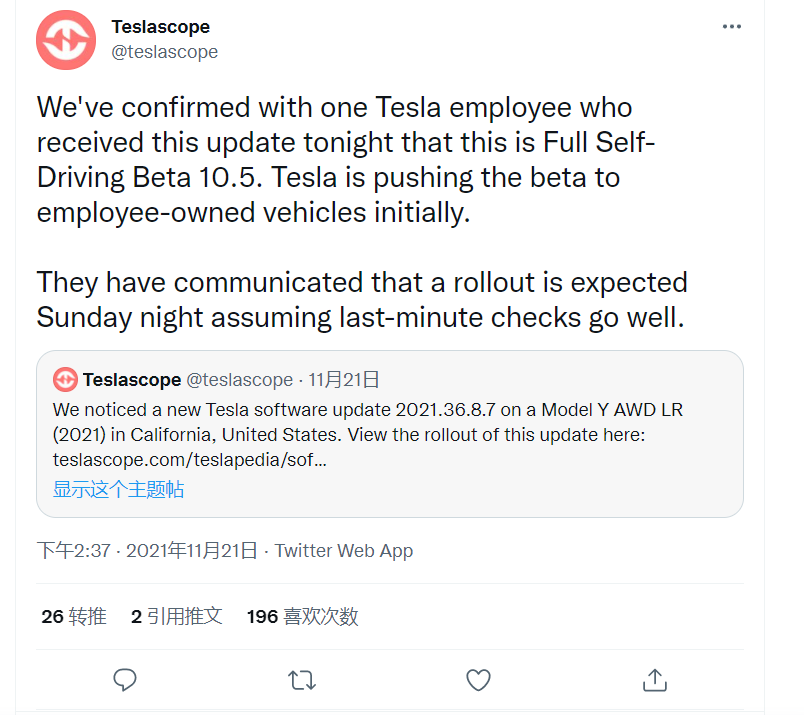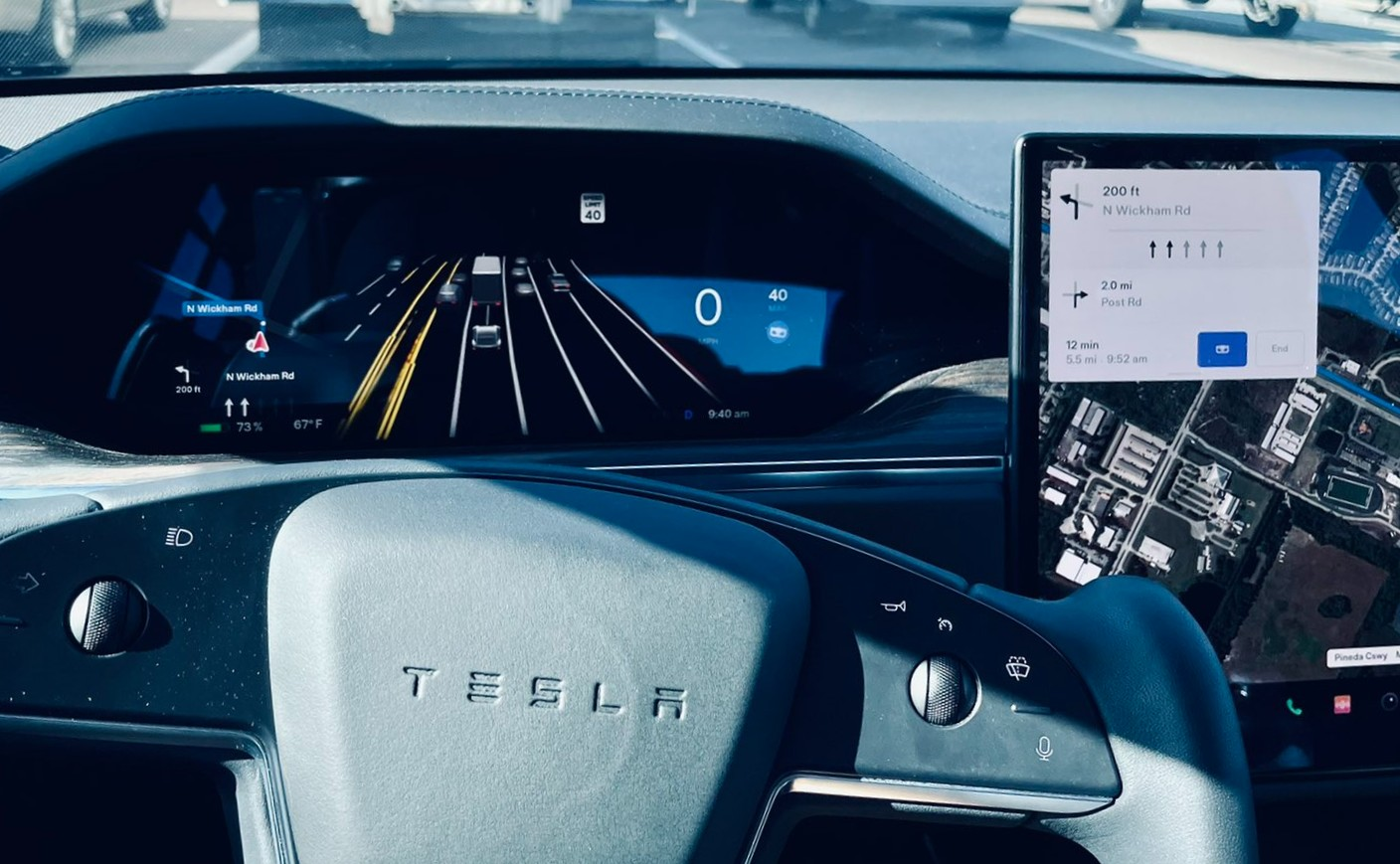Tesla’s FSD Beta 10.5 is expected to be released soon, and the comments for the updated version have already been leaked online. According to the leaked release notes, FSD Beta 10.5 will have significant improvements.
Earlier this month, Musk hinted that Version 10.5 would be released around November 20. On November 21, Musk announced on Twitter that if progress goes smoothly, the updated version will be released on Sunday night. Currently, the version is only available for vehicles owned by internal employees.

Similar to previous updates, the comments of FSD Beta 10.5 are also very detailed. This time, VRU (vulnerable road users) recognition and system vertebrae and emblem detection of FSD Beta have been improved. In addition, V10.5 also provides FSD Beta with the ability to change lanes to avoid merging vehicles instead of slowing down. The occurrences of phantom braking will also be reduced. The following are the leaked release notes for FSD Beta 10.5:
- Improved VRU (pedestrians, bicyclists, motorcycles) crossing velocity error by 20% from improved quality in our auto-labeling.
Due to the improved quality of our auto-labeling, the crossing velocity error of VRU (pedestrians, bicyclists, motorcycles) has been reduced by 20%.
- Improved static world predictions (road lines, edges, and lane connectivity) by up to 13% using a new static world auto-labeler and adding 165K autolabeled videos.
_Using a new static world auto-labeler and adding 165,000 autolabeled videos, the prediction accuracy of the static world (road lines, edges, and lane connectivity) has been improved by up to 13%. _- Improved cone and sign detections by enhancing the generalized static object network with over 15,000 additional video clips and adjusting oversampling and overweighting strategies (+4.5% precision, +10.4% recall).
Using over 15,000 additional video clips, the generalized static object network was enhanced and oversampling and overweighting strategies were adjusted, resulting in an improvement of cone and sign detections (+4.5% precision, +10.4% recall).
- Improved cut-in detection network by 5.5% to reduce false slowdowns.
The cut-in detection network was improved by 5.5% to reduce false slowdowns.
- Enabled “emergency collision avoidance maneuvering” in shadow mode.
“Emergency collision avoidance maneuvering” was enabled in shadow mode.
- Enabled behavior to lane change away from merges when safe to do so.
Behavior to lane change away from merges when safe to do so was enabled.
- Improved merge object detection recall by using multi-modal object prediction at intersections.
Multi-modal object prediction was used at intersections to improve merge object detection recall.
- Improved control for merges by increasing smoothness of arrival time constraints and considering possible merging objects beyond visibility.
The control for merges was improved by increasing the smoothness of arrival time constraints and considering possible merging objects beyond visibility.– Improved lane changes by allowing a larger deceleration limit in short-deadline situations.
Improved the process of changing lanes by allowing a higher deceleration limit during situations with tight deadlines.
- Improved lateral control for creeping forward to get more visibility
Enhanced lateral control when creeping forward to improve overall visibility.
- Improved modeling of road boundaries on high curvature roads for finer maneuvers.
Enhanced the road boundary modeling on high curvature roads for more precise driving maneuvers.
- Improved logic to stay on-route and avoid unnecessary detours/rerouting.
Enhanced the navigation logic to effectively stick to designated routes and prevent any unnecessary detours or rerouting.
🔗Source: TESLARATI
This article is a translation by ChatGPT of a Chinese report from 42HOW. If you have any questions about it, please email bd@42how.com.
